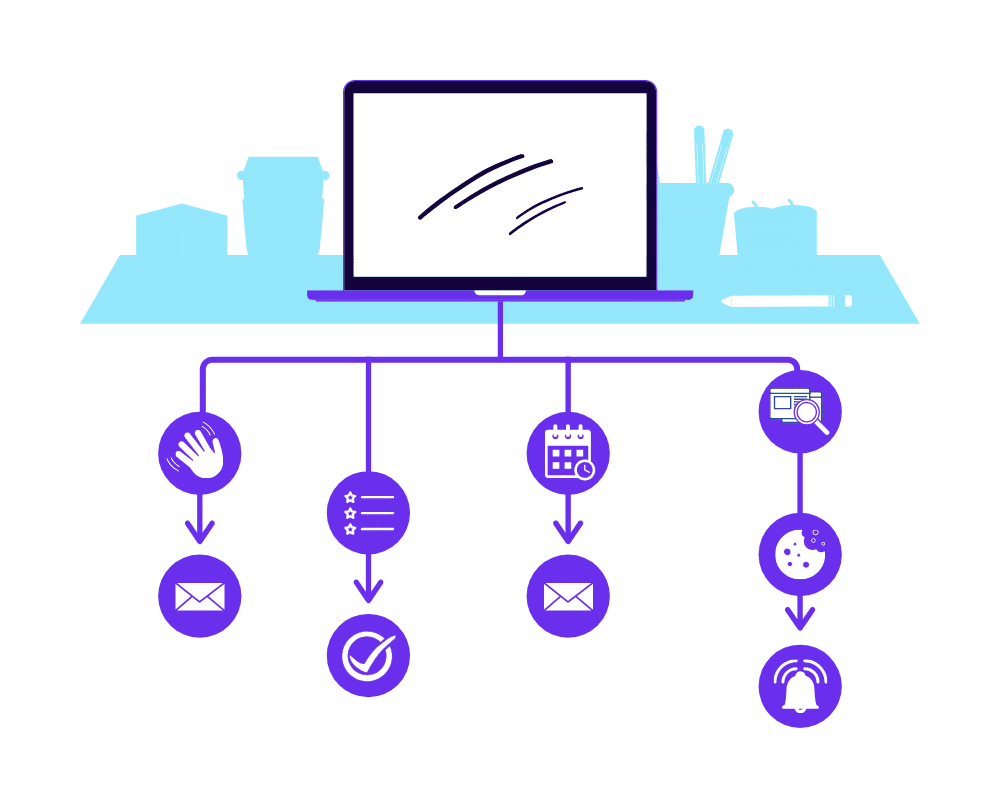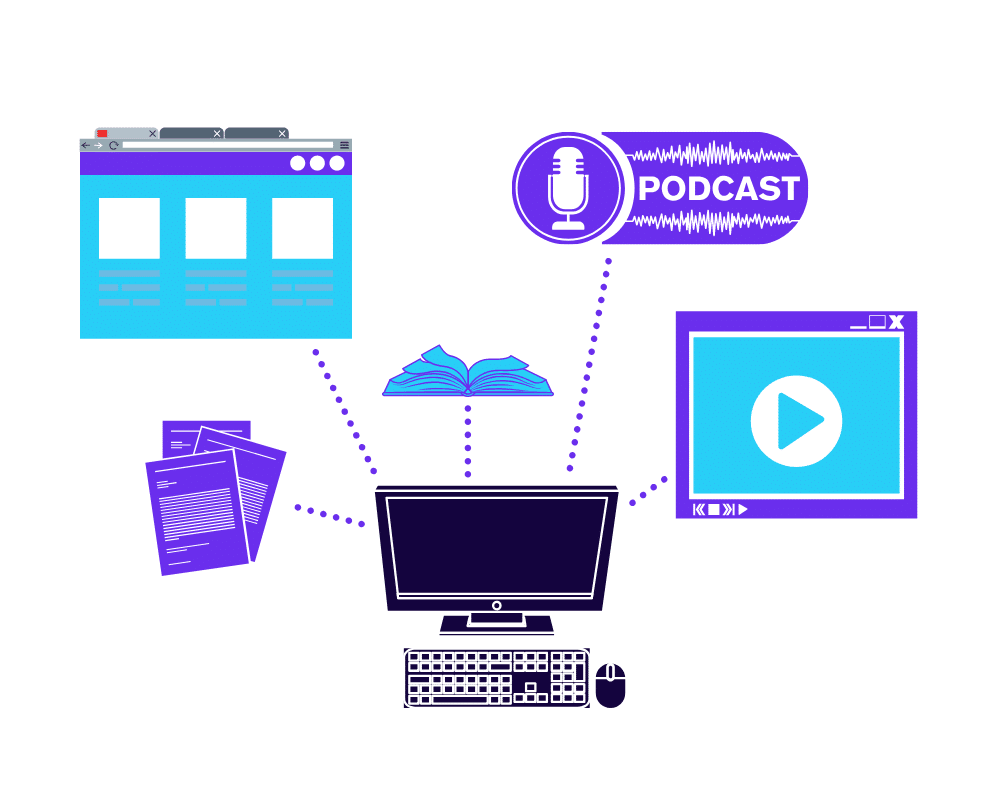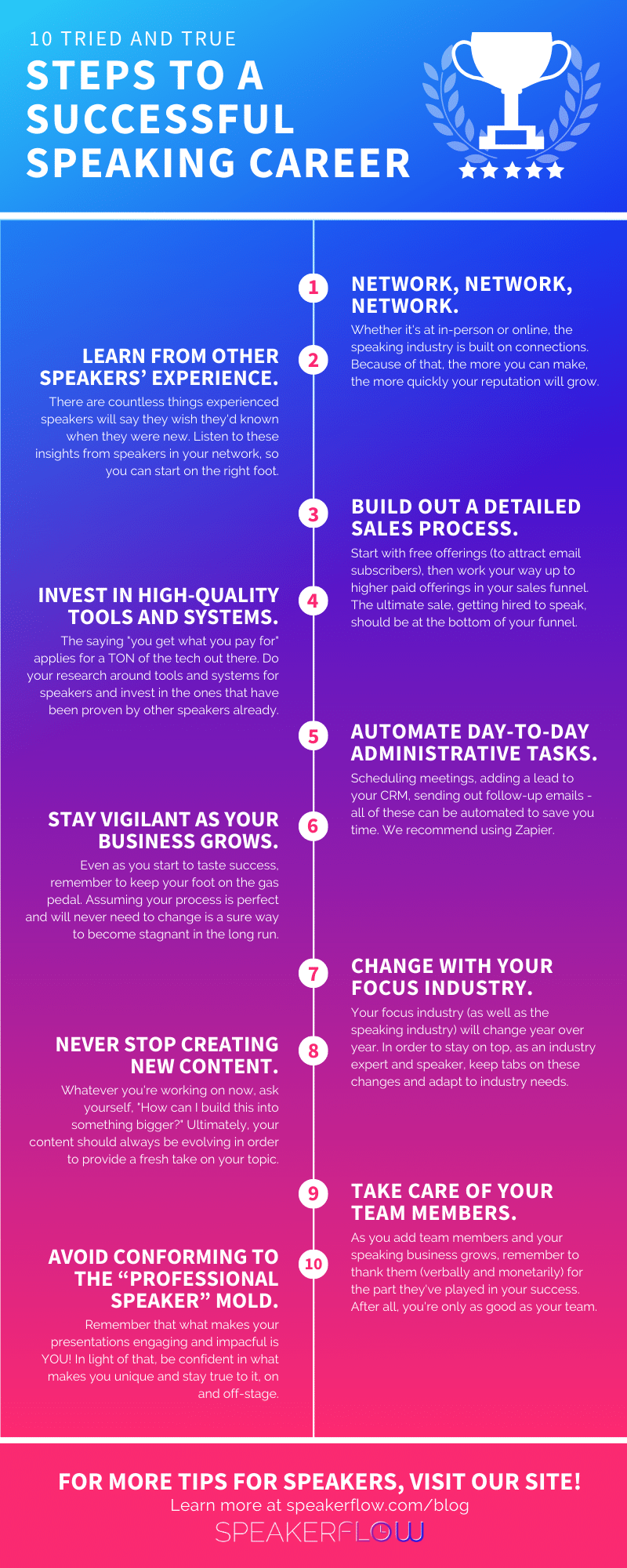Over the course of SpeakerFlow’s existence, we’ve met a massive number of professional speakers, all of which seem to focus on a different topic or niche. From millennials in the workplace to female empowerment to LGBTQ rights, if you can think of a topic, I can almost guarantee there’s a speaker out there, advocating for it. However, because there’s no central topic favored by speakers, there’s also a ton of different information in the speaking space about what does and doesn’t help you build a successful speaking business. In some cases, these tips are genuinely useful, learned from years of experience and dedication. Others are full of buzzwords, intended to sound experienced but without any truthfully valuable information. In light of this, in this guide, we’re going to cut through the bullsh*t and focus on what makes a successful speaking career, regardless of your area of expertise.
Before we get started, special thanks to all of the speakers that have been kind enough to share their words of wisdom and years of experience with our team. While much of this information was gained through our own research and data collection, we couldn’t have done it without your expertise and support. I won’t name speakers, specifically, but you know who you are. 🤗
Now, enough sappiness – Let’s get into nitty, gritty details!
- 1. Network, network, network.
- 2. Learn from other speakers’ experience.
- 3. Build out a detailed sales process.
- 4. Invest in high-quality tools and systems.
- 5. Automate day-to-day administrative tasks.
- 6. Stay vigilant as your business begins to grow.
- 7. Change with your focus industry (and with the speaking industry).
- 8. Never stop creating new content.
- 9. Take care of your team members.
- 10. Avoid conforming to the “professional speaker” mold.
1. Network, network, network.
To begin, one of the first steps in building your speaking career is building a network. Whether they’re speakers you admire, speakers that have made a name for themselves, or just simply speakers that interest you, the more personal and professional connections you can make with others in the industry, the better.

If you’re unsure where you can connect with other speakers, there are a few options to consider right off the bat. First is speakers associations. These organizations, such as the National Speakers Association or the Canadian Association of Professional Speakers, are geared towards creating a community for speakers to learn and support one another. As a result, they can be great places to network and meet other speakers in your niche. That said, because speakers’ associations tend to attract many members, the cost of attending one of their events can be steep, making it less desirable if you’re a new speaker.
If you’re under budgetary constraints, another option is connecting within smaller groups of speakers. SpeakerFlow University, for example, combines coursework with community to provide a safe space to discuss business challenges and meet speakers that have tackled them already. Other smaller groups, such as Tricia Brouk’s Big Talk Academy, focus more on the “speaking” side of managing a speaking business. Depending on your main concerns, the group best suited to your speaking business needs may vary. I recommend connecting with facilitators for groups you’re considering. From there, if it seems like a good fit, join the group for a while! Even if you don’t stick around forever, you’ll have met more speakers and gained more insights than if you continued trying to go it alone.
2. Learn from other speakers’ experience.
That brings me to the second key component of building a successful speaking career: learning from other speakers. Looking back on your experiences outside of the speaking industry, think about the people that shaped who you are today. Maybe they were exceptional leaders that inspired you to go beyond your comfort zone. On the flip side, maybe they were difficult to work with and, rather than teaching you what to do, their actions served as examples of what not to do.

Within the speaking industry, these same examples exist everywhere. At speakers association events or in smaller groups, you’ll almost always find yourself looking at each speaker around you and thinking “Wow, I’d never even thought of doing that. I have to remember that!” or “Wow…I have to remember to never do that.” As you build your network within the industry, keep your eyes open for these learning opportunities. That way, you can avoid some of the mistakes made by others in your network.
Besides watching for other speakers’ ‘do’s’ and ‘don’ts,’ it can also be incredibly helpful to just ask them for their insights outright. If you’re at an event, offer to buy them a coffee as a thank you, in advance, for a half hour of their time. If you’re reaching out to them virtually, send them a $5 coffee gift card and ask for a “virtual coffee”. Not only is this a respectful way to ask for their advice. It also allows you to prepare your questions in advance. Below are a few examples, to kickstart your brainstorming:
- What initially led you to pursue a speaking career?
- Where and when was your first paid speaking gig?
- If you could give your past self any advice, to speed up your speaking career, what would it be?
3. Build out a detailed sales process.
After learning from other speakers, the next step is to build your sales process. As far as your speaking career is concerned, think of your sales process as the foundation. While the awards you’ll win and the eventual size of your business are both worth celebrating, when the time comes, neither are possible without a solid sales process. This is true in part because of the importance of learning to sell yourself, until you can hire a team. However, it’s also important in that it impacts every other aspect of your business.

For example, let’s look at the average sales process for a professional speaker. Initially, you come across an event, looking for a speaker. You reach out to the event organizer and coordinate a video call to discuss details. After that, the contract is signed, and you keep in contact with them consistently until the event is over. Lastly, you touch base with them after the event is over to request a testimonial.
While that may sound like a lot of odds and ends to remember, this is, in all honesty, a simplified version of what most sales processes look like. On top of these steps, the majority of speakers also include automation to help them remember tasks or reminders, integrated tools and systems to track each contact and event, and detailed reporting for their sales metrics. As you build your own speaking career, take care to include these components in your sales process, too. From the steps in the process itself to the technology you use to make it happen, remember that you get back what you put into it. In terms of money and in terms of time, the more you invest, the more success you’ll see from the sales process as a whole.
4. Invest in high-quality tools and systems.
In addition to investing in your sales process, don’t skimp when it comes to tools. To put it simply, tools don’t just help you stay organized. When used correctly, they can also act like an additional member of your team, taking day-to-day tasks and processes off your plate and helping your speaking career blossom more quickly. Because of this, it’s important to select high-quality tools and use them to their maximum potential.

Within our own team, a few examples of these tools include Asana, Canva, Zoom, and Calendly. For each of these apps, the free plan was exceptionally robust, allowing us to remain on the free plan for months before jumping up to a higher tier. Likewise, in your own speaking business, this is the first thing to look for in choosing your tools: a valuable free option. That way, you can avoid having to pay for a given tool until your business has expanded to accommodate a larger tech budget.
Aside from these, there are a few options specific to the speaker market, including the SpeakerFlow CRM and the Speaker Intel Engine. Both of these were created, originally, to ensure speakers had affordable, pre-customized tools that guaranteed a return on investment. The SpeakerFlow CRM, for example, is available for a one-time fee (to cover the onboarding time) and a monthly payment of only $45. This covers the CRM itself as well as 40+ other apps to help manage your speaking business. Not a bad price for that much tech, right?
When considering tools, whether they’re speaker-specific or not, this is the second thing to look for: extensive features. Again, if you choose high-quality tools, even if there is a learning curve initially, the results they’ll produce for your business will be well worth it.
5. Automate day-to-day administrative tasks.
Another thing to look for, when selecting tools for your speaking business, is automation functionality. Basically, there are two sources of software automation, starting with existing automation in the tools you currently use. This can be automated reminders in your CRM, automatic emails from your scheduling app – basically, anything that can be configured in the “Settings” of the tool you’re looking at. The second source of automation is through automation apps, such as Zapier. Unlike existing internal automation, automation apps connect tools that don’t natively integrate with each other, allowing you to trigger a series of events across several applications.

Internally, at SpeakerFlow, we use a combination of internal automation and Zapier automation to handle the work of an administrator. If someone schedules a discovery call with us, for example, it’s automatically added to each of our Google Calendars, we’re all notified via email, and the potential client receives a confirmation email, saying “We can’t wait to meet you!”.
In the same way, if you ask the average established speaker, part of building their speaking career was getting their tools to do some of their work. That way, more of the tedious tasks were taken care of automatically, and they were free to focus on bigger projects and goals. Below are some examples of how you can work automation into your processes.
- In your CRM, automatic changes to a contact record’s stage or status as you move them through the sales pipeline
- Automatic weekly/monthly reporting based off of metrics in the tool at hand
- Chatbots on your site or Facebook page
- Automatic contact creation in your CRM when someone fills out a contact form on your website
- Automatic contact creation in your CRM and email marketing app when someone signs up for your newsletter on your website
[hubspot type=cta portal=5815852 id=e68abcd9-8ad0-4673-81d2-450b59a97afc]
6. Stay vigilant as your business begins to grow.
At this point, after learning from other speakers, building your processes, and choosing your tools, your speaking career should be off to a solid start. Although there’s always a learning curve, with technology or techniques, working hard to learn and improve will almost certainly pay off. However, that brings me to the next bit of advice from successful speakers: don’t get cocky. This may seem more like common sense than insight, but it’s true! Far too many speakers fall into the trap of thinking that if something has worked to some degree so far, there isn’t any reason to change it. In other words, “If it ain’t broke, don’t fix it”. Unfortunately, this is rarely the case, and whether you’re looking at your sales process, your tools, or even the material in your presentations, the standard for what “good” looks like is bound to change.

We saw this first hand with a previous client who, although she’d been successful in the past, was struggling to book gigs as of late, largely due to an outdated value proposition and a set of tools that weren’t really working for her anymore. Thankfully, she reached out to colleagues that were doing well as well as our team to see what she could do differently. From there, she was upgraded to more useful tools and updated her sales email templates and contracts, helping her get back on track in no time.
Likewise, as your speaking career blossoms, stay on top of your sales metrics and keep a firm grasp on your business processes. Ideally, you should know all of the ins and outs of your speaking business. That way, you’ll notice (and solve) a problem when it first appears, rather than having to play “catch-up” after your sales take a dive.
7. Change with your focus industry (and with the speaking industry).
Similarly, step #7 in building a successful speaking career is staying on top of changes to your focus industry. We have a saying within our own team that “niches lead to riches”. In other words, as a salesperson, you’re more likely to succeed if you tailor your focus and your content to a specific group or industry. This is especially true for professional speakers, as you’re likely not the only one speaking about your given topic.

For example, if you search Google for “leadership speaker,” millions of results pop up. This is partly because the search engine is pulling in anything relating to the search query “leadership speaker”. However, it’s also because “leadership speaker” is relatively vague. As a result, if you want to stand out as a leadership speaker, one of the easiest ways to do so is by narrowing your focus. Maybe you’re a leadership speaker for women or small businesses or college students. Either way, regardless of who you’re targeting, the key is to make your presentations and content more specific. That way, groups and businesses in your target group will see you’re a good fit right from the beginning.
After that, make a habit of staying on top of changes in your niche. Ask yourself, “What key issues are people in this group facing?” and “What steps need to be taken if these issues are to be solved?”. Then, if you’re content doesn’t directly address the answers to these questions, adjust it. Essentially, your presentations and content should be relevant to your target audience at all times. They should also be in accordance with speaking industry trends (like offering virtual keynotes). That way, event organizers in your niche will see you as an expert in your field and in the speaking industry. Win, win!
8. Never stop creating new content.
Next up, the eighth way to build and maintain your speaking career is through content. If you’re starting from scratch, there are four main components of a good content strategy, starting with blogs. While blogging has been around for decades, in recent years, it’s exploded across the world, as Google’s search algorithms make it easier and easier for people to find information. However, your blogs are only easy to find if you take the right steps, including keyword optimizing them, adding graphics or videos, and making sure they’re the appropriate length. All in all, there are dozens of factors that contribute to where a blog shows up in a Google search. For this guide, I’ll leave it at that, but for more information, check out our Ultimate Guide to Speaker Marketing. 👍

In the meantime, besides blogs, the other main areas of content creation are podcasts, social media posts, and videos. Like blogs, each of these areas has been gaining in popularity in recent years, making it easier than ever for you to appear in front of your target audience. Because of this, it’s important that you not only consistently create new content but also share your content from platform to platform. The technical term for this is “multi-channel marketing”.
In short, building your speaking career initially demands that you create content so that people can find you. From there, it’s important to share your content between content platforms. That way, not only are you continually generating material that Google can use to make you visible in your niche. You’re also showing anyone that finds your content that you’re active in your niche and passionate about the changes in it, making you a clear expert in your field and a shoe-in for any event organizers considering you.
9. Take care of your team members.
Moving on, number nine in the list of steps for growing your speaking career isn’t about you, as the business owner. It’s all about your team. Obviously, building a team for your speaking business isn’t generally possible until you’re an established speaker. After all, you can’t afford additional help until you can afford salary, commission (for any independent sales reps on your team), and additional bonuses or rewards. However, the most successful speakers all have one thing in common, when it came to building a team: They always made sure they knew their worth.

All in all, there are numerous ways to show your team how grateful you are for their help and the role they’ve played in growing your speaking business. From personalized items to monetary bonuses, you’ll ultimately know best what your team member(s) would like in a gift. That said, if you already have a team and are unsure what gifts would be appropriate, below are a few suggestions.
- Upgrade one of their office items (laptop, software, etc.)
- Tickets to an upcoming sporting event or concert in their area
- Gift card to a restaurant and/or movie for them and their significant other
For more gift suggestions, I highly recommend checking out speaker and marketing expert Brittany Hodak’s “Top 20 Gifting Ideas for 2020” guide. It’s full of ideas that, even if they aren’t your thing, are sure to get your mind moving with ideas.
That said, regardless of the gift, your goal as the business owner, should be to show the recipient that you acknowledge and appreciate the role they’ve played in your business’s growth. That way, they know you value their efforts and want them around for the long haul.
10. Avoid conforming to the “professional speaker” mold.
Finally, last but not least of the ways to build your speaking career is to stick to what makes you special, not just as a speaker but as a human being! As mentioned previously, within the speaking industry, there are countless speakers for any given topic. Leadership? Check. Change management? Check. Customer service? Double check. However, that doesn’t mean that you don’t have a shot at standing out from the crowd.

Take Tony Robbins, for example. As a motivational speaker, Robbins is far from the first speaker to get on stage with the goal of inspiring his audience to create a more passionate and purposeful life for themselves. Yet, as far as motivational speakers go, he’s still one of the top motivational speakers in the world today. With a unique brand, adherence to his authentic personality, and a consistent message, he isn’t just hired for his insights and experience. He’s also hired for his own character and the experience he creates for his audiences.
In the same way, although the vast majority of successful speakers have used these tips to some degree, there are bound to be things you learn from your own experiences that bring you unique success. As you build your speaking career, remember that these ten steps are just the beginning. Remember to stay passionate, stay eager to learn and grow, and most importantly, stay true to yourself! I promise, no matter what your niche or level of speaking experience, if you follow those guidelines, you’re sure to go far. 🚀






